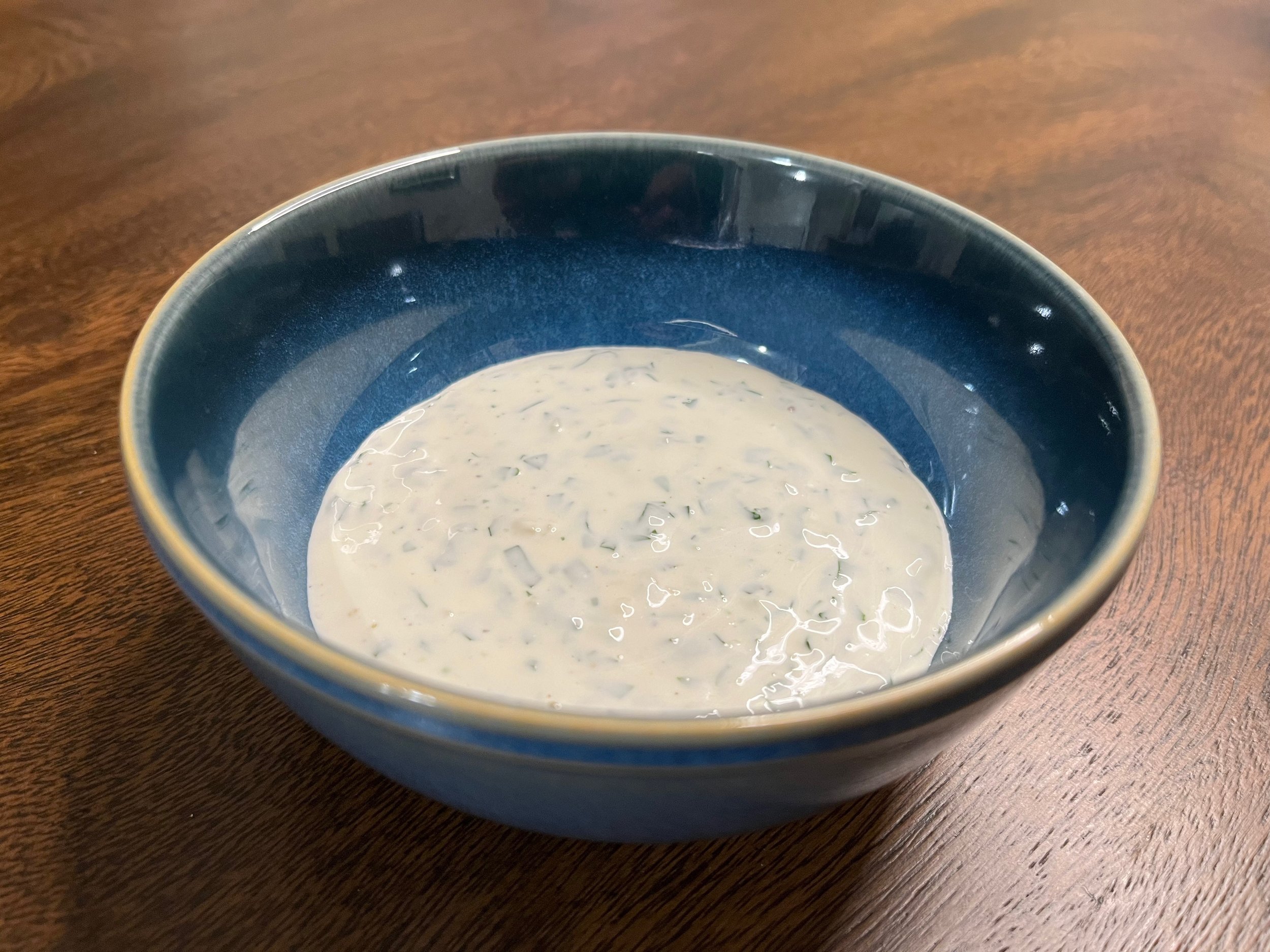Mussels with White Wine and Garlic

Moules Mariniére
Mussels steamed with garlic and wine is a rustic dish found all along the Continental coast of the English Channel, from Zeeland to Normandy, with some historians tracing its origins back to the 14th century[1]. As the name moules mariniere—mariner’s mussels—suggests, the dish likely originated with the seafarers who have plied the Channel waters since ancient times, a meal cooked up in winter months when fresh fish was more difficult to come by. When served alongside French fries, the dish becomes moules-frites, one of the most popular Belgian bistro meals. Mussels with white wine and garlic is an elegant and delicious dish which is surprisingly easy to make at home. Here’s how it’s done.
Ingredients
2 lb mussels, cleaned
4 tbsp butter
4 cloves garlic, sliced
2 shallots, minced
½ cup white wine
1 bunch parsley, chopped
1 lemon
Olive oil
Farm-raised mussels are a sustainable (and relatively cheap) seafood choice[2]. Usually grown on ropes suspended above the seabed, mussels generally arrive in the store without much grit inside them. In case your mussels aren’t clean, though, purge them of grit as follows. The ideal way to do this is to place the mussels in a bucket of cold, clean seawater for a few hours, and let them expel the grit on their own. Bivalves kept in seawater can stay submerged for up to a day.
However, as most people do not have access to seawater, you must do your best to replicate seawater at home. We can do this by mixing cold water with sea salt, at a ratio of 1 tablespoon salt to 2 cups water. Place the mussels in this solution for 1-2 hours to let them expel the grit. Do not use fresh water, which will kill the mussels. The mussels are unlikely to survive for too long in the salt water, so do not keep them submerged for longer than 2 hours.
As you remove mussels from the solution, scrub the shells with a clean and sturdy brush to rid the shells of any sand or mud. While you scrub, look out for any open mussels. Mussels which are alive and healthy should be tightly shut. If a mussel is open, give it a strong tap on the shell. If the mussel doesn’t immediately close, it’s probably dead. Throw it out.
Mussels are anchored onto the substrate upon which they grow by a network of incredibly strong threads, known as a byssus or beard[3]. If any of your mussels still has a beard, grip it firmly and pull it off.
With the mussels ready, we can prepare the other ingredients. Thinly slice the garlic, mince the shallots, and finely chop the parsley. The mussels will cook mostly by steaming, so we want to use a pot with a tight-fitting lid for this dish. Heat about 1 teaspoon olive oil in the pot over medium-low heat, and add the garlic and shallots. Sweat the aromatics, stirring occasionally, until softened, about 5 minutes.
When the aromatics are ready, add the mussels to the pot, pour over the white wine, and immediately clamp on the lid—the wine should almost immediately start to produce steam. The mussels should cook in 2-4 minutes, depending on their size. Shake the pot occasionally to toss the clams without opening the lid.
There is nothing worse than an overcooked, rubbery mussel. Because they are so lean, even an additional minute under heat will cause the mussel to become tough. No matter how close in size your batch of mussels are, there will always be some variation, with the smallest mussels likely to be done first. Therefore, to avoid overdone mussels, we have to pull each individual mussel out of the pot as soon as its done cooking, rather than wait for the entire batch to be done. Fortunately for us, mussels, like their clam cousins, have a built-in doneness indicator—when a mussel is cooked, it opens! Have a large bowl standing by to hold the cooked mussels, and once the mussels have been in the pot for 2 minutes, start checking. Open the lid, quickly remove any open mussels to the bowl, and then close the lid again. Repeat this process every 30 seconds, removing the mussels as they finish cooking, until all the mussels are cooked.
With the mussels done cooking, we can work on building the rich, fragrant, brothy sauce which brings this dish together. The white wine, shallots, and garlic have already joined forces with the juices of the mussels to form a savory broth. Add 4 tablespoons of butter to the pot, and bring the liquid to a boil while whisking vigorously. The whisking will emulsify the melting butter with the broth, creating a creamy sauce. Continue to whisk as we reduce the sauce by half. Keep the sauce at a rolling boil rather than a simmer as we reduce the liquid—the violent agitation of the water will also help the sauce emulsify. When the sauce has reduced, stir in the chopped parsley and 1 tablespoon lemon juice. The final sauce should still have a relatively thin consistency, but be pale yellow in color and opaque.
Return the cooked mussels to the pot, together with any juices which may have collected at the bottom of the bowl. Toss them in the sauce for 1 minute, until warmed through, then remove the mussels from the heat. Place the cooked mussels into a serving bowl, and ladle over plenty of the sauce. Serve immediately, with lemon wedges on the side and some crusty bread or French fries to mop up the sauce!
Substitutions
Spring onions or minced leeks can be used in addition to the garlic and shallots, to add a fresher allium flavor. If you prefer a richer sauce, stir in about ¼ cup of heavy cream into the sauce. You can also use other liquids to steam your mussels, such as hard cider, beer, or chicken broth.
[1] Both France and Belgium claim moules mariniere as a national dish, a heated debate which rages on. Given that the dish likely predates both countries, the whole tribal debate seems rather pointless. France did not become a centralized and unified power until the late 14th century (during which much of the Channel coast was under the rule of the English Crown anyway), and the modern nation of Belgium wasn’t established until 1830. Furthermore, the borders of the Low Countries have been in constant flux since Roman times, with the land of modern-day Belgium often considered a part of Imperial France. Alas, it seems that a basic understanding of history—and an acknowledgment that neighbors split by a line on a map are not that different—is beyond the grasp of some.
[2] Mussels are filter feeders, consuming plankton and algae. In one day, a single mussel filters about 10 gallons of seawater.
[3] Scientists have studied the adhesives and byssal threads mussels produce, which are among the strongest naturally occurring biological materials. There are potential industrial and medicinal applications for these materials, such as in tendon replacement.
Recipe
Prep Time: 10 min Cook Time: 10 min Total Time: 20 min
Difficulty: 4/5
Heat Sources: 1 burner
Equipment: pot
Servings: 4
Ingredients
2 lb mussels, cleaned
4 tbsp butter
4 cloves garlic, sliced
2 shallots, minced
½ cup white wine
1 bunch parsley, chopped
1 lemon
Olive oil
Instructions
1. Heat about 1 tsp olive oil in a pot over medium-low heat. Add the garlic and shallots, and sauté for about 5 minutes until softened and fragrant.
2. Turn the heat up to high, add the mussels to the pot, and pour over the white wine. Immediately clamp on the lid and steam for 2-4 minutes, shaking the pot occasionally to toss the mussels.
3. As soon as a mussel opens in the pot, it is cooked. Each mussel will cook in a slightly different time, and keeping a mussel on the heat after it has opened will result in that mussel becoming overcooked and rubbery. From 1 minute onwards, check the pot every 30 seconds for open mussel, and remove the cooked mussels to a large bowl. Continue cooking, removing the mussels as they finish cooking, until all the mussels are cooked.
4. Add the butter to the pot and reduce the sauce by half, whisking vigorously to emulsify the sauce. Add the chopped parsley, along with about 1 tbsp lemon juice, and stir to combine.
5. Return the mussels to the pot and stir them in the sauce for 1 minute before removing from the heat. Serve immediately, with lemon wedges on the side and crusty bread or French fries.













